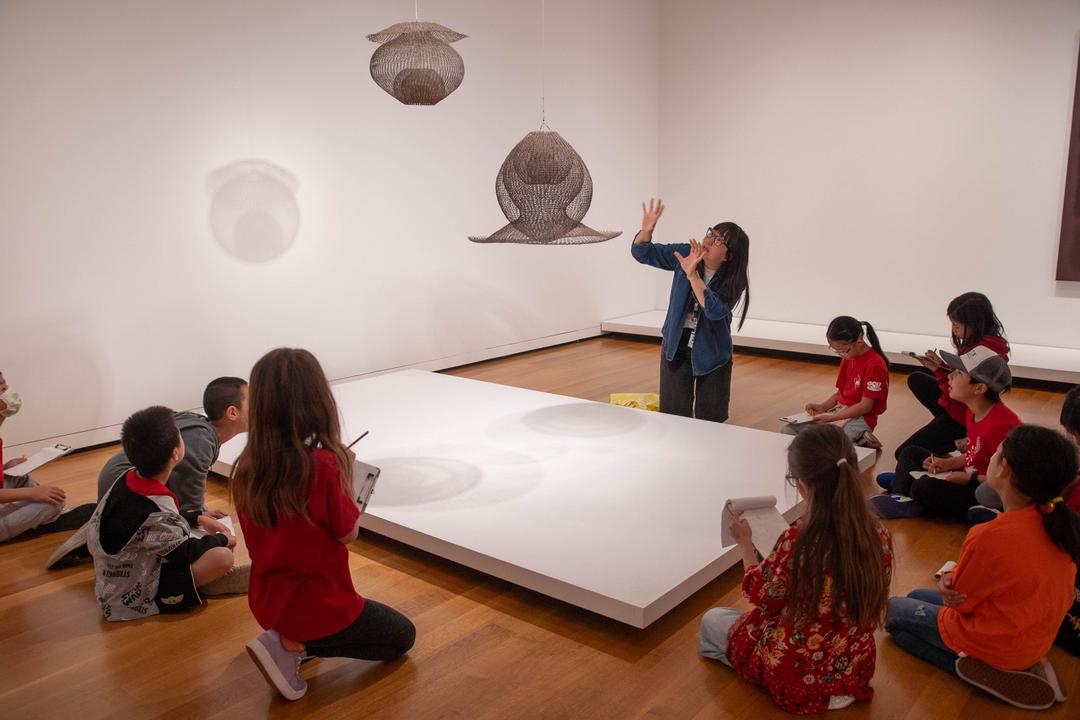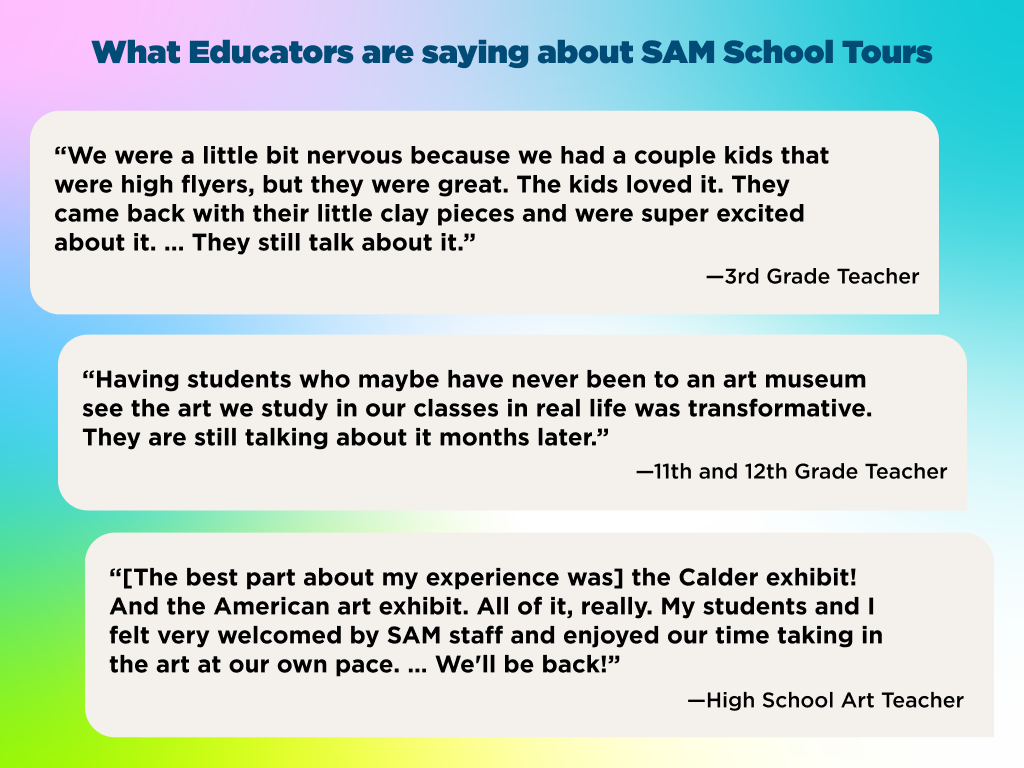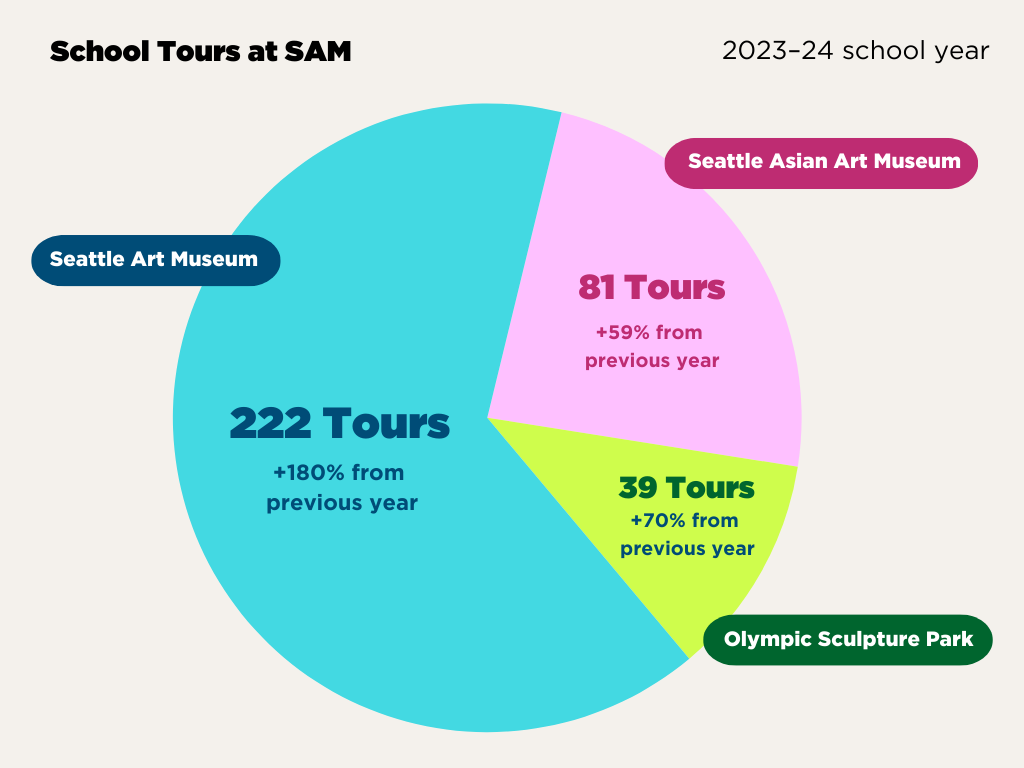Access to Art: Rebuilding School Tours at SAM

For most school districts, the 2024–25 school year began in September, and after a month of getting settled, school tours began to ramp up across all three SAM locations. Though we offer some type of school tour year round, our most robust offerings take place between late September through the end of June each year. Like many programs at the museum, supporting school tours is a team effort that spans across various departments. Through institutional collaboration, school tours have mostly returned to their pre-pandemic form after a few years of rebuilding from school and museum closures in 2020 and 2021.
Since I started working at SAM six years ago, interacting with students on field trips has always been my favorite part of the job. The students’ excitement at being in a new place and their imaginative responses to the artwork on view always gives me energy, in spite of all the walking and vocal projection needed to lead tours. However, nothing drove home the value of an in-person museum experience more than when I was giving a dozen virtual tours every week during the 2021–22 school year. Though we tried our best to stay connected with schools, it just wasn’t the same to look at a work of art together on a computer screen instead of in the galleries together. For so many students, there is something about a museum visit that sticks with them, even if they don’t remember specific dates or materials used in certain artworks. We often hear from teachers that students still talk about their field trips months later. As we’ve rebuilt school tours at SAM, we’re reflecting on their impact. I wanted to share what they mean for students in our region.
Based on our 2023–24 school tour evaluations, 82% of educators agreed that their students felt welcomed and valued at SAM. This is especially meaningful, considering how many students who come on field trips have never been to an art museum before. It sets a positive tone for a possible lifetime of museum going and engaging with visual art.

Educators can choose to lead the group through the galleries themselves on a self-guided tour, or select a guided tour, which includes a tour led by a volunteer docent and an art workshop led by a teaching artist. Each SAM location has a different tour and art workshop curriculum that aligns with national, state, and district standards across a range of subjects. Those subjects include National Core Arts Standards, Common Core State Standards in English Language Arts/Literacy, Social-Emotional Learning, Social Studies/Ethnic Studies, STEAM (Science, Technology, Engineering, Art, Math), and more. We work with educator advisors and school district partners throughout the year to make sure this curriculum is relevant and engaging for students.
In the 2023–24 school year, SAM served over 11,000 students across 339 tours total, with over 50% of these students coming from Title I schools. While we are not quite back at pre-COVID numbers, which saw peaks of over 20,000 students during the 2016–17 school year, for example, it is heartening to see the increase from the 2022–23 school year across our different locations. School tour gains can be largely credited to the reintroduction of hands-on art workshops led by teaching artists, which many educators voiced were needed in 2023–24 evaluations.

School tours at SAM are free for all public schools. We offer full or partial bus reimbursement for Title I schools, which means 40% of their students qualify for free or reduced-price lunch. These initiatives contribute to SAM’s mission to make arts access more equitable, particularly for historically underrepresented communities. Though the creative economy of Washington makes up almost 10% of overall state GSP, Washington is ranked 45 out of 50 states in providing public funding for the arts, which includes arts education. This disproportionate funding impacts who is able to gain entry to this thriving part of our state’s economy. Creative Advantage Seattle notes that there are “significant barriers facing students in accessing quality arts instruction — especially students of color, those receiving free and reduced lunch, those in special education programs, and multilingual language learners.” Many of our Title I partner schools do not have visual art teachers, or they split one teacher between two schools. They also typically do not have funding through PTAs or district grants for specialized supplies or field trip costs. We are very appreciative that we can offer these learning opportunities free of charge to so many students.
Learn more and book a school tour for your students!
– Yaoyao Liu, SAM’s Manager of School Tours
Photo: Graphics: Naomi Chan.